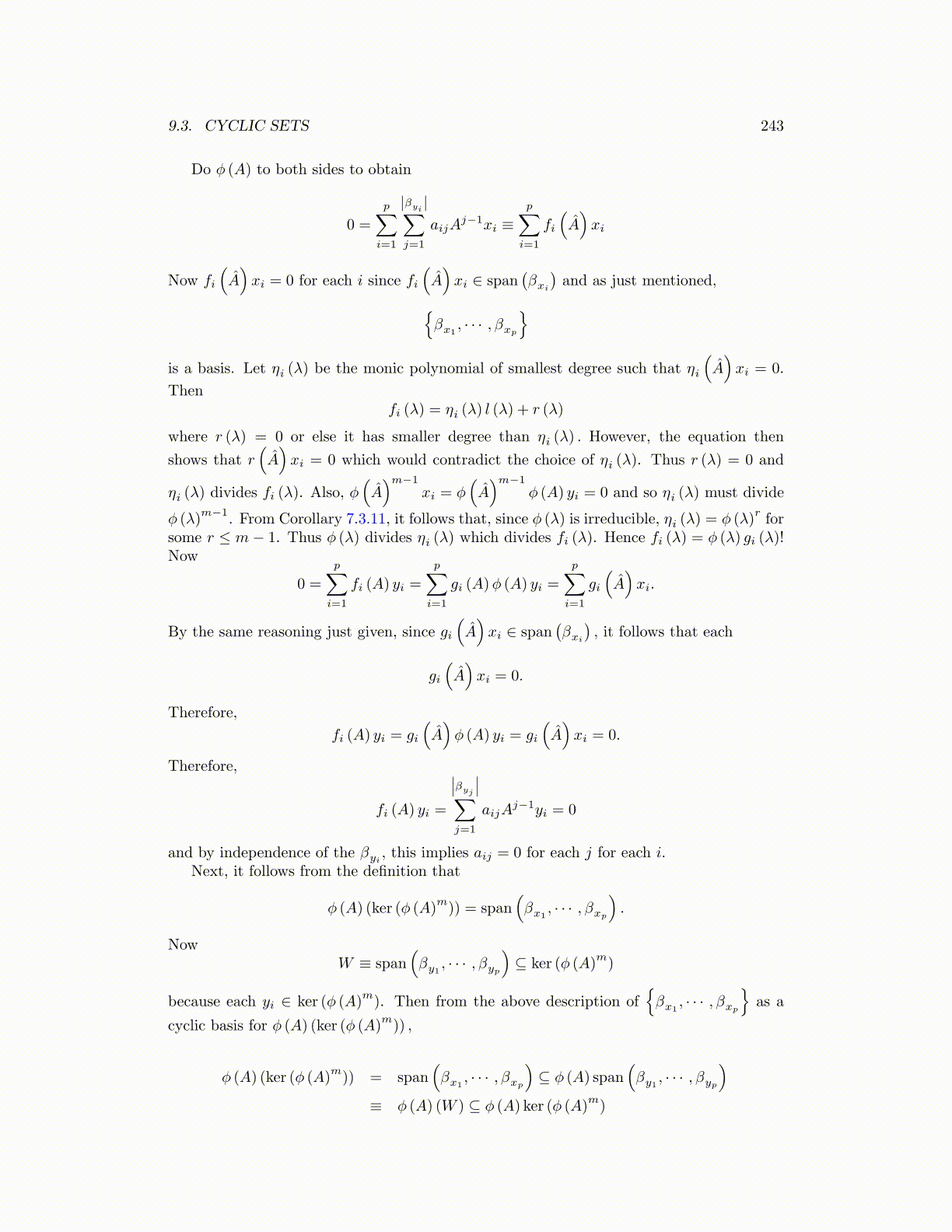
9.3. CYCLIC SETS 243
Do ϕ (A) to both sides to obtain
0 =
p∑i=1
|βyi|∑
j=1
aijAj−1xi ≡
p∑i=1
fi
(Â)xi
Now fi
(Â)xi = 0 for each i since fi
(Â)xi ∈ span
(βxi
)and as just mentioned,{
βx1, · · · , βxp
}is a basis. Let ηi (λ) be the monic polynomial of smallest degree such that ηi
(Â)xi = 0.
Thenfi (λ) = ηi (λ) l (λ) + r (λ)
where r (λ) = 0 or else it has smaller degree than ηi (λ) . However, the equation then
shows that r(Â)xi = 0 which would contradict the choice of ηi (λ). Thus r (λ) = 0 and
ηi (λ) divides fi (λ). Also, ϕ(Â)m−1
xi = ϕ(Â)m−1
ϕ (A) yi = 0 and so ηi (λ) must divide
ϕ (λ)m−1
. From Corollary 7.3.11, it follows that, since ϕ (λ) is irreducible, ηi (λ) = ϕ (λ)rfor
some r ≤ m− 1. Thus ϕ (λ) divides ηi (λ) which divides fi (λ). Hence fi (λ) = ϕ (λ) gi (λ)!Now
0 =
p∑i=1
fi (A) yi =
p∑i=1
gi (A)ϕ (A) yi =
p∑i=1
gi
(Â)xi.
By the same reasoning just given, since gi
(Â)xi ∈ span
(βxi
), it follows that each
gi
(Â)xi = 0.
Therefore,
fi (A) yi = gi
(Â)ϕ (A) yi = gi
(Â)xi = 0.
Therefore,
fi (A) yi =
∣∣∣βyj
∣∣∣∑j=1
aijAj−1yi = 0
and by independence of the βyi, this implies aij = 0 for each j for each i.
Next, it follows from the definition that
ϕ (A) (ker (ϕ (A)m)) = span
(βx1
, · · · , βxp
).
NowW ≡ span
(βy1
, · · · , βyp
)⊆ ker (ϕ (A)
m)
because each yi ∈ ker (ϕ (A)m). Then from the above description of
{βx1
, · · · , βxp
}as a
cyclic basis for ϕ (A) (ker (ϕ (A)m)) ,
ϕ (A) (ker (ϕ (A)m)) = span
(βx1
, · · · , βxp
)⊆ ϕ (A) span
(βy1
, · · · , βyp
)≡ ϕ (A) (W ) ⊆ ϕ (A) ker (ϕ (A)
m)